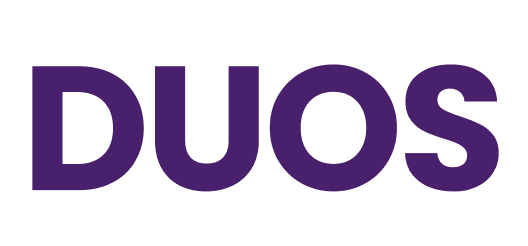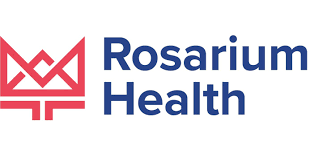Building for impact: Innovation opportunities for older adults
Thank you to The SCAN Foundation for their support and collaboration on this work, with special gratitude to Anika Heavener, Natalie King, and Xenia Viragh.
Innovators take note: the opportunity for digital health solutions and programs to reach older adults is ripe, and it’s only becoming more important. While the COVID-19 pandemic introduced many seniors to digital health solutions like virtual care, their usage rates remain steady four years after COVID-19’s onset—suggesting older adults are growing accustomed to virtual care as a part of their care pathways. With Americans aged 65+ making up 17% of the population, but driving more than 50% of U.S. healthcare spend, digital innovators need to keep this rapidly-growing user community top-of-mind.
Designing health technology for older adults entails looking past generational stereotypes and actually getting into the data of how Americans live and access care as they age. The diversity of older Americans is increasing, and older adults’ care realities differ drastically by factors like race, ethnicity, income bracket, and zip code. New ideas will come from observing and designing for older adults’ care experiences and giving them a seat at the table to provide feedback and co-iterate on improvements.
In RockHealth.org’s recent publication, “A Lens on Health Equity in Digital Health: Unlocking the Innovation Opportunity”, we explore three opportunity areas for more equitable digital health impact: facilitating adoption and trust, promoting responsible design, and scaling innovation. We identified four communities that have increasingly adopted digital health, but have often found available options aren’t quite tailored to their needs. We then applied the lens of these opportunity areas to the needs of each individual community—one of which is older adults—to develop the action steps below for innovators designing and scaling solutions for these populations.
Digital health adoption snapshot
According to Rock Health’s 2023 Digital Health Consumer Adoption Survey, of respondents aged 65+1:
- 70% have received virtual care at some point
- 27% own or have owned a wearable device
- 67% have searched for healthcare information online
- 39% have searched for a care provider online
Taking action
Design for the care journey beyond 65. “Older adults” tends to refer to anyone aged 65 or older, but in this category, people’s ages can differ by more than 30 years. Ability, mobility, socioeconomic status, and personal needs all change drastically within that time frame. Designers must consider how to serve older adults on a spectrum, with built-in flexibilities to account for shifts like vision, memory, and mobility changes. Go-to-market and consumer support strategies should also account for different consumer personas within the 65+ cohort.

Assured Allies works with health plans to create personalized healthy aging plans for senior members. By comparing each member to population data sets, Assured Allies flags individual risks along the aging trajectory and implements evidence-based interventions to mitigate them.
“When we talk about designing for older adults, we’re discussing a diverse market that spans the ages of 65 to 100+. There’s an opportunity for more segmentation that considers differences in needs, barriers, and motivations to develop solutions across the older adult marketplace.”
– General Partner of a leading aging-focused venture capital fund
Acknowledge cost as a reality of care. Today, older Americans have less income and carry more debt than ever before, creating risky situations of financial vulnerability. Nearly 1 in 10 older adults has medical debt, and that number rises to more than 1 in 5 for older adults with annual incomes under $25,000. Innovators need to prepare systems and processes that help older adults manage the costs associated with health technology or digitally-enabled care tools, and should consider how cost impacts routines like prescription adherence. Cost should also be recognized as a barrier to technology adoption, not folded into a “non-adopter” storyline.

Understand the complexities of the home. Most older adults want to age in place, but doing so isn’t straightforward. For many older adults, their home is their most valuable asset, and home modifications or in-home care can be prohibitively expensive. Aging-in-place questions are even trickier for the growing number of older adults who rent, experience homelessness, or live far away from medical infrastructure. There’s a market need and opportunity to help older adults plan for home modifications and set up their spaces for tech-enabled care.

“There are large opportunity areas that exist in addressing social determinants of health among older adults, including transportation needs, nutritional needs, financial literacy, and social isolation. If a digital health solution can address any of these areas, that is significant.” — Program Lead at a regional social organization supporting the older adult population
Embrace on-ramps to digital. Older adults are open to digital innovation, but that’s not a green light for digital-only engagement. Phone and mail communication remain important to older adults, and multichannel strategies are critical for marketing, customer support, and patient engagement. Every virtual-first approach should have an easy-to-find, low-tech touchpoint for maximum senior comfort.

Support caregivers and older adults who live without them. Many older adults receive help from family, friends, neighbors, and paid caregivers to manage their medical care, households, or daily tasks. It’s important to consider the role of the caregiver, while also investing in opportunities to support older adults who don’t have consistent caregiving support (perhaps their children live far away) or any support at all. As many as half of older adults who need daily support don’t get that assistance, and tech-enabled programs are well-positioned to support gaps in care.

Players across the digital health ecosystem face opportunities to facilitate adoption and trust, promote responsible design, and scale innovation to meet the needs and preferences of older adults. These initiatives require a thoughtful understanding of older adults’ specific health and technology needs, and organizations centered on this community, like The SCAN Foundation, can serve as expert strategic partners. The takeaway for digital health innovators? Take action to not only improve the lives of older adults, but also to tap into a substantial market opportunity.
Footnotes
- Analytical cohort selected based on “65 to 74 years” or “Age 75 or older” response to Survey question, “What is your age?”
- Rosarium Health is a Rock Health Capital portfolio company.



